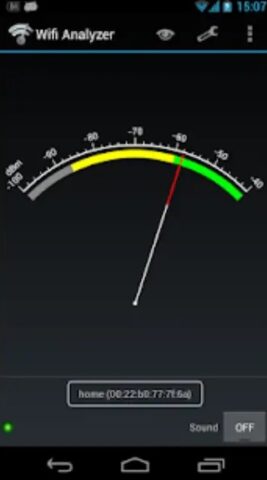Signal Strength
Signal strength is a measure of the power or amplitude of an electromagnetic signal, typically measured in units such as watts or milliwatts. In wireless communication systems, signal strength is commonly measured in dBm (decibels relative to one milliwatt), which represents the power level of the signal relative to one milliwatt.
Signal strength can vary depending on several factors, including distance, obstacles, interference, and the power output of the transmitting device. A stronger signal generally results in better performance and reliability, while a weaker signal can result in dropped connections, slow data rates, and reduced coverage.
dB
dB (decibel) is a unit of measurement used to express the ratio of two values, often used in signal strength measurements. In wireless networks, dB is used to express the gain of amplifiers and the loss of cables, antennas, and other components. A positive dB value represents amplification, while a negative dB value represents loss.
For example, if a cable causes a 3 dB loss, it means that the output power is half of the input power. If an amplifier provides a gain of 10 dB, it means that the output power is 10 times higher than the input power.
Using dB to express the gain or loss of components in a wireless network can help to optimize signal quality and improve overall performance. By minimizing losses and maximizing gains, it is possible to achieve stronger signals, better coverage, and more reliable connections.
Here is a dBm to watt conversion table:
| dBm | Watt |
|---|---|
| 30 | 1 W |
| 29 | 0.794 W |
| 28 | 0.631 W |
| 27 | 0.501 W |
| 26 | 0.398 W |
| 25 | 0.316 W |
| 24 | 0.251 W |
| 23 | 0.200 W |
| 22 | 0.158 W |
| 21 | 0.126 W |
| 20 | 0.100 W |
| 19 | 0.079 W |
| 18 | 0.063 W |
| 17 | 0.050 W |
| 16 | 0.040 W |
| 15 | 0.032 W |
| 14 | 0.025 W |
| 13 | 0.020 W |
| 12 | 0.016 W |
| 11 | 0.013 W |
| 10 | 0.010 W |
| 9 | 0.008 W |
| 8 | 0.006 W |
| 7 | 0.005 W |
| 6 | 0.004 W |
| 5 | 0.003 W |
| 4 | 0.002 W |
| 3 | 0.002 W |
| 2 | 0.001 W |
| 1 | 0.001 W |
| 0 | 0.001 W |
| -1 | 0.0008 W |
| -2 | 0.0006 W |
| -3 | 0.0005 W |
| -4 | 0.0004 W |
| -5 | 0.0003 W |
| -6 | 0.00025 W |
| -7 | 0.0002 W |
| -8 | 0.00016 W |
| -9 | 0.00013 W |
| -10 | 0.0001 W |
| -11 | 0.00008 W |
| -12 | 0.000063 W |
| -13 | 0.00005 W |
| -14 | 0.00004 W |
| -15 | 0.000032 W |
| -16 | 0.000025 W |
| -17 | 0.00002 W |
| -18 | 0.000016 W |
| -19 | 0.000013 W |
| -20 | 0.00001 W |
Conclusion
Understanding signal strength and dB is crucial for optimizing the performance and reliability of wireless networks. By measuring signal strength in dBm and using dB to express the gain or loss of components, it is possible to identify and minimize signal losses and interference, improve coverage and data rates, and ensure that the network is operating at peak performance.

